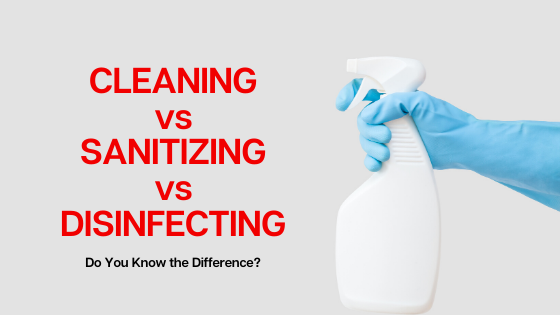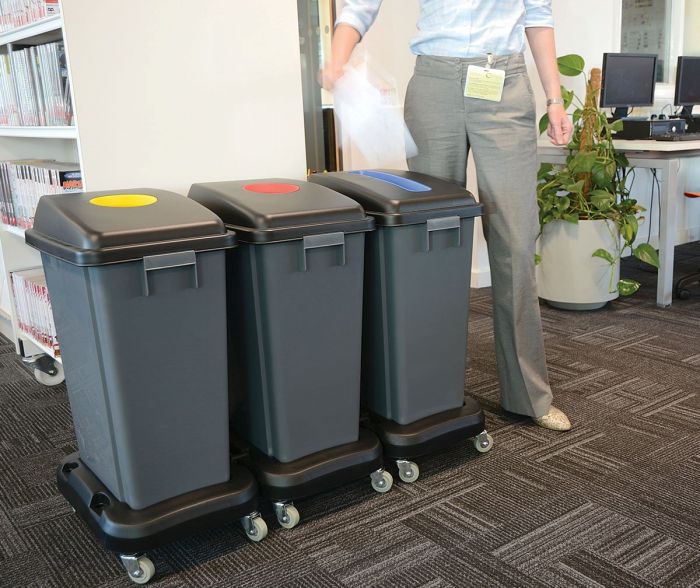Hand Sanitiser, Disinfecting and Cleaning
As 2021 begins and vaccines are being rolled out and people become disillusioned and at odds with restrictions in place, it is vital we remember our personal hygiene and general cleaning rituals. Now more than ever people are cleaning, sanitising and disinfecting where they might not have before. 2020 saw an unprecedented demand for and sale of these products, hand sanitiser in particular. Gyms, hotels and schools, to name a few have sanitising equipment and supplies in place where they were prior to Covid-19. As the pandemic continues it is vital we remember our new routines for cleaning, sanitising and disinfecting but it is important to know the difference.
What is the difference?
Cleaning is where you remove, dirt, dust or debris from a surface e.g. wiping crumbs off a table. When cleaning it is recommended you use some form of soap or detergent where possible. Cleaning does not involve killing any germs or bacteria that could potentially be clinging onto the surface. Cleaning only removes germs, possibly from one surface to another e.g. from a table to a cloth.
Sanitisers do not kill germs or bacteria either but they greatly help in reducing the numbers and therefore infections spreading. They can be alcoholic or non-alcoholic based. When it comes to Covid-19 it is recommended that a 70% alcoholic based sanitiser is used. Healthcare settings the recommended percentage is anywhere between 60-95%. Sanitisers should not be used in place of washing your hands. (See our full sanitising range here). Disinfecting is where a form of chemical disinfectants for example; Microsafe Wipes or IPA Sprays are used.

What is the difference between Sanitising and Disinfecting?
More often than not these terms are used interchangeably but there is a big difference. The main difference here is the quantity or amount of bacteria and germs killed during the process. Sanitising greatly reduces the number of bacteria – depending in the efficiency of the sanitiser – whereas disinfecting kills them. Disinfecting is generally used when looking to kill specific strains or pathogens of flus, viruses and other diseases. The best disinfectants can kill up to 99.99% of bacteria if used correctly. Sanitising would be enough for tables, countertops and other similar surfaces whereas disinfecting is specifically needed for restrooms and leisure facilities like gyms and sports halls.
Know the difference and have a cleaning, sanitising and disinfecting routine in place. Oh and always be well stocked up on supplies!!
Correctly disposing of hygiene and cleaning supplies
The most of obvious thing to do? Read the label for correct disposal methods of wipes or empty spray bottles. Pre-pandemic we wouldn’t have given this a second thought. Now we have to be ever so careful. It is recommended by the HSE that all closed cover bins be used, ideally where possible a colour coded system is in place. Click here for more on colour coded wipes and disposal units. Try and use up the full bottle or tub before throwing it away. This reduces excess waste and prevents contamination in the recycling process. Do not reuse and dispose immediately after use. If your office, workplace or school have specific guidelines or a policy in place, follow them. They should be in line with that of the HSE recommendations.

What should you look for in your Hand Sanitiser?
- That it is at minimum 60% alcohol, 70% is the recommendation by the HSE.
- Read the list of ingredients to ensure that the sanitiser is either IPA (Iso-Propyl Alcohol) or Ethanol based, other types could be harmful.
- You should generally check the country of Origin. Here at McKechnie Cleaning Services we source Irish manufactured brands of hand sanitiser.
- If unsure consult the Biocidal Products Register on the Department of Agriculture, Food and the Marine website. Products can be categorized for Personal and Professional use or both. Our Frend and Galtec brands are listed on the register.
The Biocidal products register is not a recommendation for products, it is merely a list of those that are stringently tested and meet all regulations. However, if a product is not noted on the register this does not mean that it is not safe to use. The reason for this is that the substance if still being reviewed by department at the time in question it does not require HSE authorization. You should always determine your needs before deciding on a hand sanitiser. Consultation with the manufacturer or supplier is the best course of action in this scenario.
Where do Sanitisers and Disinfectants work best?
According to the HSE “disinfectant effectiveness in alcohol-based hand rubs depends on: type of alcohol; concentrations; quantity applied on hands; and time of exposure.” They also go on to note that according to the ECDC “that alcohol-based disinfectants have been shown to significantly reduce infectivity of enveloped viruses such as SARS-CoV-2 in concentrations of 70%-80% with one-minute exposure time.” The takeaway from this is use often and follow the correct guidelines on applying or using any hygiene related product.

